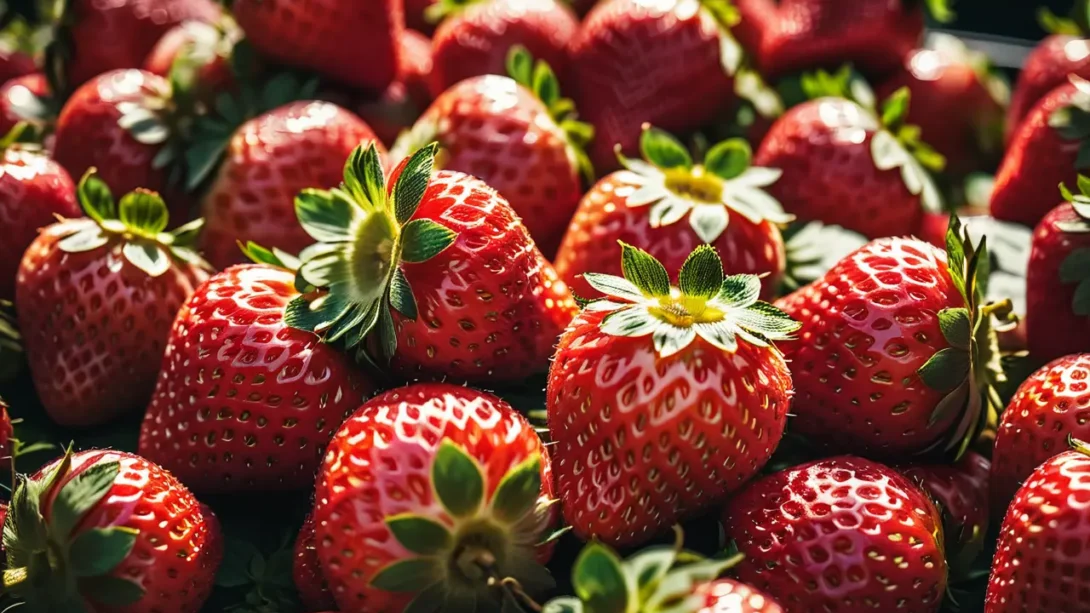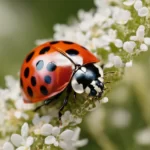Strawberries, with their luscious sweetness and vibrant red hue, are a quintessential symbol of summer. Whether enjoyed fresh from the vine, nestled atop a creamy dessert, or blended into a refreshing smoothie, strawberries captivate our senses with their tantalizing flavor and eye-catching color. But have you ever stopped to wonder why strawberries are red? Beyond their delectable taste and visual appeal lies a fascinating world of botanical science and biochemical magic. In this exploration, we peel back the layers of mystery surrounding the crimson allure of strawberries, revealing the intricate processes that make them nature’s sweetheart.
Anatomy of a Strawberry
To understand why strawberries are red, we must first dissect the anatomy of these beloved fruits. At first glance, a strawberry appears as a simple berry, but upon closer inspection, its complex structure emerges. Each strawberry comprises several key components, including the fleshy outer layer known as the receptacle, which provides support and protection for the developing fruit. Nestled on the receptacle are tiny, edible seeds called achenes, each containing a miniature embryo capable of germinating into a new strawberry plant. Surrounding the seeds is the strawberry’s crowning glory: its green calyx, adorned with leaf-like sepals that encase the fruit during its early stages of growth.
The Role of Anthocyanins
Now, let’s delve deeper into the molecular makeup of strawberries to uncover the secret behind their striking red color. Central to this mystery are pigments known as anthocyanins, which are responsible for imparting hues of red, purple, and blue to many fruits, flowers, and vegetables. In strawberries, anthocyanins play a starring role in determining the fruit’s coloration, particularly in its skin and flesh. These water-soluble pigments are not only responsible for the vibrant red hue that signals ripeness but also contribute to the antioxidant properties that make strawberries a nutritional powerhouse. As strawberries ripen, the concentration of anthocyanins increases, resulting in a deeper, richer red color that beckons us to indulge in their juicy sweetness.
Ripening Process
As strawberries progress through their ripening journey, a series of biochemical transformations occur within the fruit, culminating in the perfect balance of sweetness and acidity that defines their flavor profile. The ripening process begins with the emergence of delicate white flowers, each harboring the promise of a succulent berry. Following pollination, these flowers give way to tiny green strawberries, which gradually swell and mature under the warm embrace of the sun.
Biochemical changes unfold within the ripening fruit, orchestrated by a complex interplay of enzymes, hormones, and metabolic pathways. One of the most significant transformations involves the accumulation of sugars, such as fructose and glucose, which impart sweetness to the developing berries. Concurrently, the breakdown of chlorophyll—the green pigment responsible for photosynthesis—reveals the underlying pigments that lend color to the fruit’s flesh and skin.
Ethylene, a gaseous plant hormone, acts as a master regulator of ripening, coordinating the timing and progression of physiological changes in strawberries and other fruits. As strawberries mature, they produce increasing amounts of ethylene, which triggers ripening-related processes such as softening, color development, and flavor enhancement. Ethylene not only influences the timing of ripening but also plays a crucial role in determining the intensity of strawberry coloration, guiding the synthesis of anthocyanins and other pigments that contribute to their vibrant red hue.
Environmental Factors
In addition to biochemical cues, environmental factors exert a profound influence on the ripening and coloration of strawberries. Temperature, light exposure, and soil conditions all play pivotal roles in shaping the characteristics of ripe strawberries.
Optimal temperatures, typically ranging from 60 to 80 degrees Fahrenheit (15 to 27 degrees Celsius), promote the production of anthocyanins and enhance the redness of strawberries. Cooler temperatures slow down ripening processes, allowing strawberries to develop deeper coloration and sweeter flavors. Conversely, excessive heat can lead to premature ripening and loss of fruit quality, underscoring the importance of climate moderation in strawberry cultivation.
Sunlight acts as a catalyst for anthocyanin synthesis, stimulating the production of these pigments and intensifying strawberry coloration. Adequate exposure to sunlight ensures robust anthocyanin accumulation and contributes to the development of fully ripe, deeply colored berries. However, excessive sun exposure can also pose risks, causing sunburn damage to strawberry fruits and compromising their visual appeal and taste.
Soil composition, particularly nutrient availability, plays a crucial role in supporting healthy plant growth and fruit development. Strawberries require essential nutrients such as potassium and nitrogen to thrive, with deficiencies in these nutrients impairing fruit quality and coloration. By providing balanced nutrition and maintaining optimal soil conditions, growers can enhance the redness and flavor of strawberries, ensuring a bountiful harvest of picture-perfect fruits.
Cultivar Differences
The world of strawberries is teeming with diversity, with an array of cultivars boasting unique traits and characteristics. From heirloom varieties cherished for their nostalgia-inducing flavor to modern hybrids bred for disease resistance and productivity, strawberry cultivars span a spectrum of shapes, sizes, and colors. When it comes to redness, cultivar selection plays a pivotal role in determining the intensity and vibrancy of strawberry coloration.
Some cultivars are renowned for their deep crimson hues, with strawberries that practically glow with ripe, ruby-red brilliance. These cultivars, often prized for their superior flavor and visual appeal, owe their intense coloration to high levels of anthocyanins and other pigments concentrated in their flesh and skin. Popular examples include ‘Chandler’, ‘Earliglow’, and ‘Albion,’ each celebrated for its rich, red berries that epitomize the essence of summertime sweetness.
In contrast, other cultivars may exhibit lighter shades of red or even pinkish hues, reflecting variations in anthocyanin content and fruit composition. While these strawberries may lack the bold, fiery redness of their counterparts, they still possess the same delectable flavor and nutritional value, making them equally prized by discerning palates. Cultivars such as ‘Seascape’, ‘Seaspray’, and ‘Camino Real’ exemplify this spectrum of color diversity, offering a kaleidoscope of hues to suit every taste and preference.
Breeding Efforts
Behind the scenes, plant breeders work tirelessly to develop new strawberry cultivars that push the boundaries of flavor, productivity, and visual appeal. Through selective breeding and advanced genetic techniques, breeders aim to enhance the redness of strawberries while simultaneously improving traits such as yield, disease resistance, and shelf life. These efforts represent a delicate balancing act, as breeders strive to preserve the natural beauty and flavor of strawberries while harnessing the power of modern technology to create more resilient and flavorful varieties.
One promising area of research involves the manipulation of genes involved in anthocyanin biosynthesis, with the goal of enhancing pigment production and intensifying strawberry coloration. By identifying and targeting key regulatory genes, scientists hope to unlock new possibilities for creating strawberries with deeper, more vivid red hues. Additionally, advances in genomic sequencing and marker-assisted selection have accelerated the pace of breeding, allowing breeders to more efficiently identify and incorporate desirable traits into new cultivars.
As we peer into the future of strawberry cultivation, one thing remains clear: the allure of red strawberries will continue to captivate and inspire us, whether enjoyed fresh from the garden or incorporated into tantalizing culinary creations. Whether you prefer your strawberries ruby-red or blush-pink, their irresistible sweetness and vibrant coloration serve as a testament to the enduring magic of nature’s bounty. So savor each succulent bite, and revel in the crimson splendor of strawberries, nature’s timeless delight.



